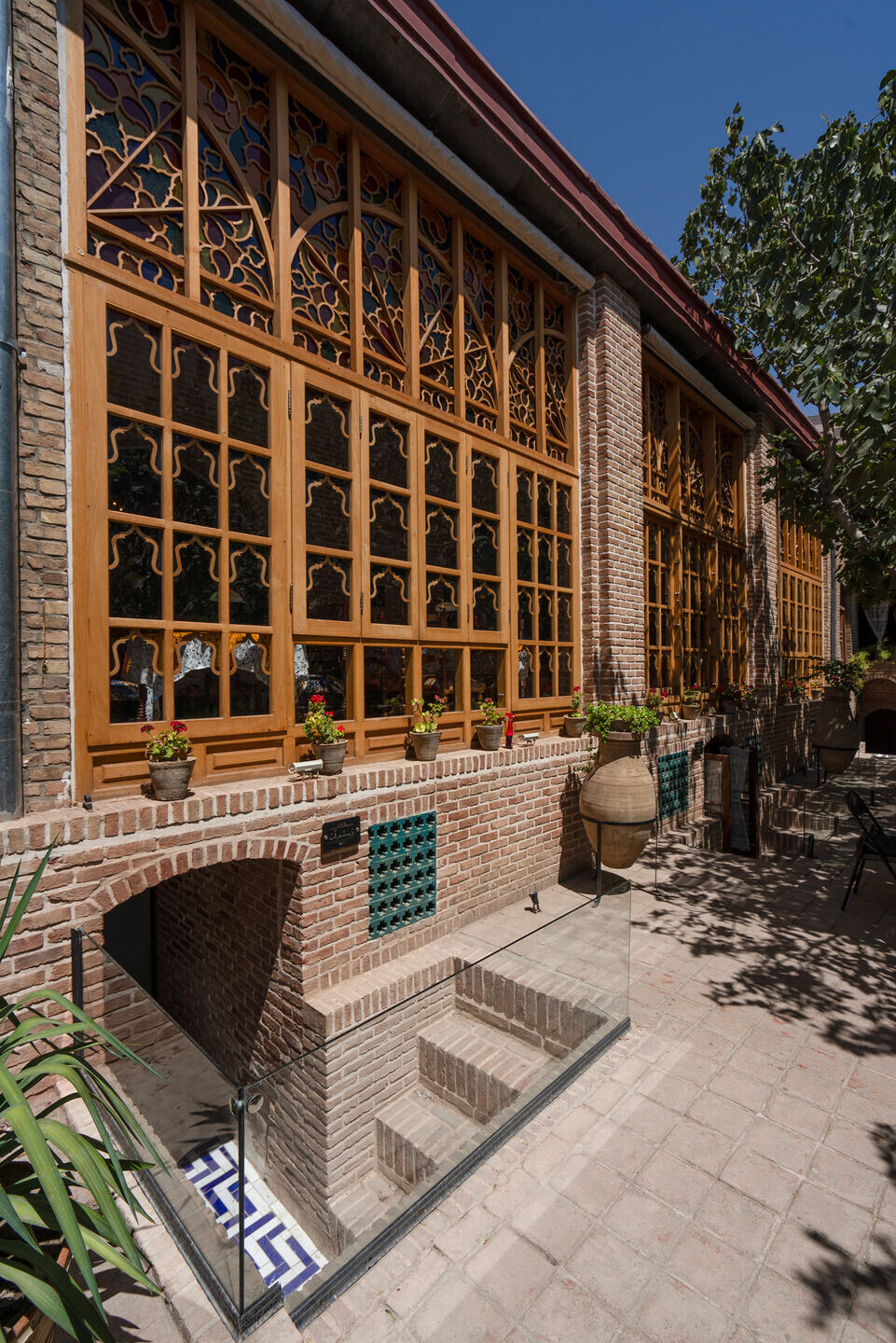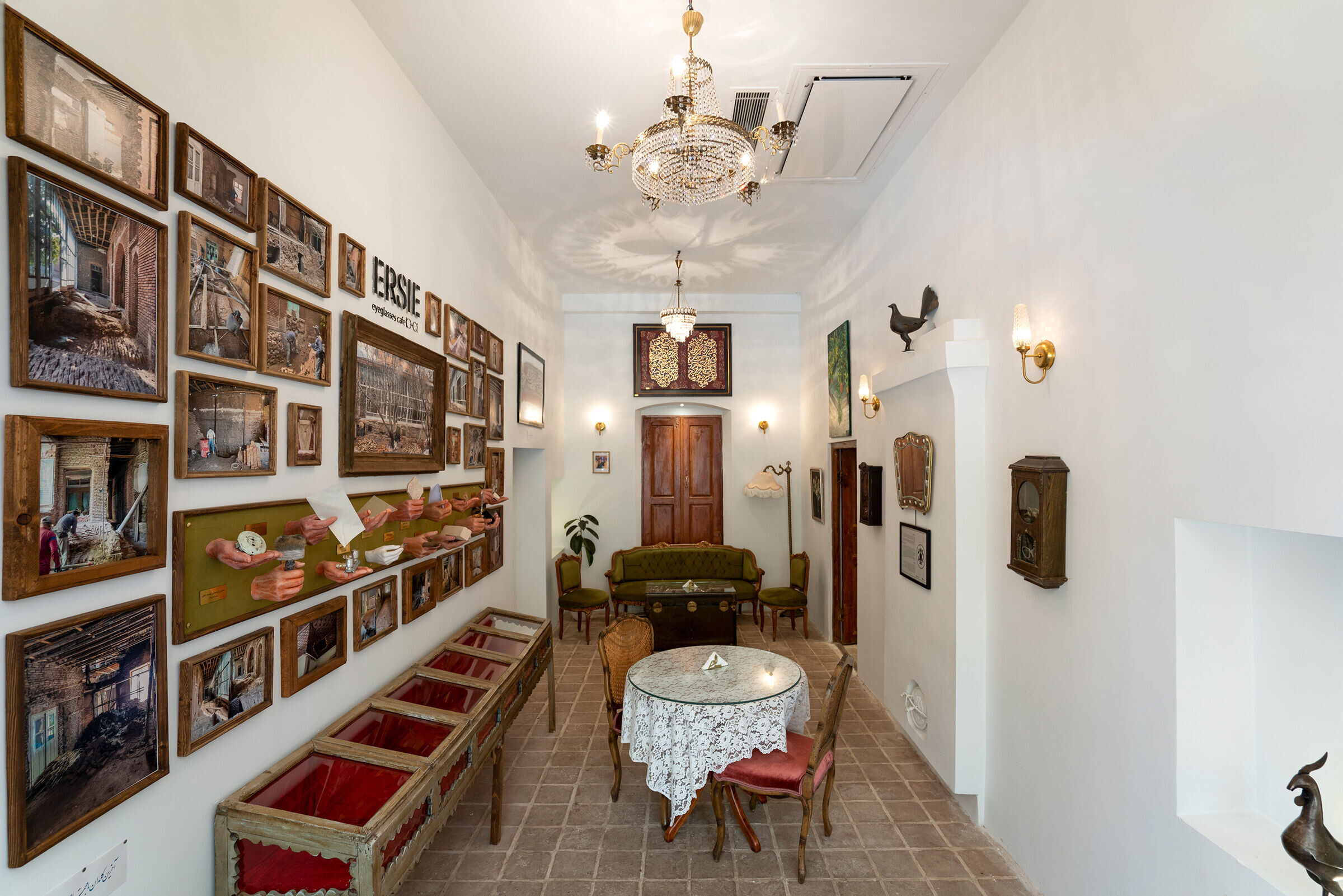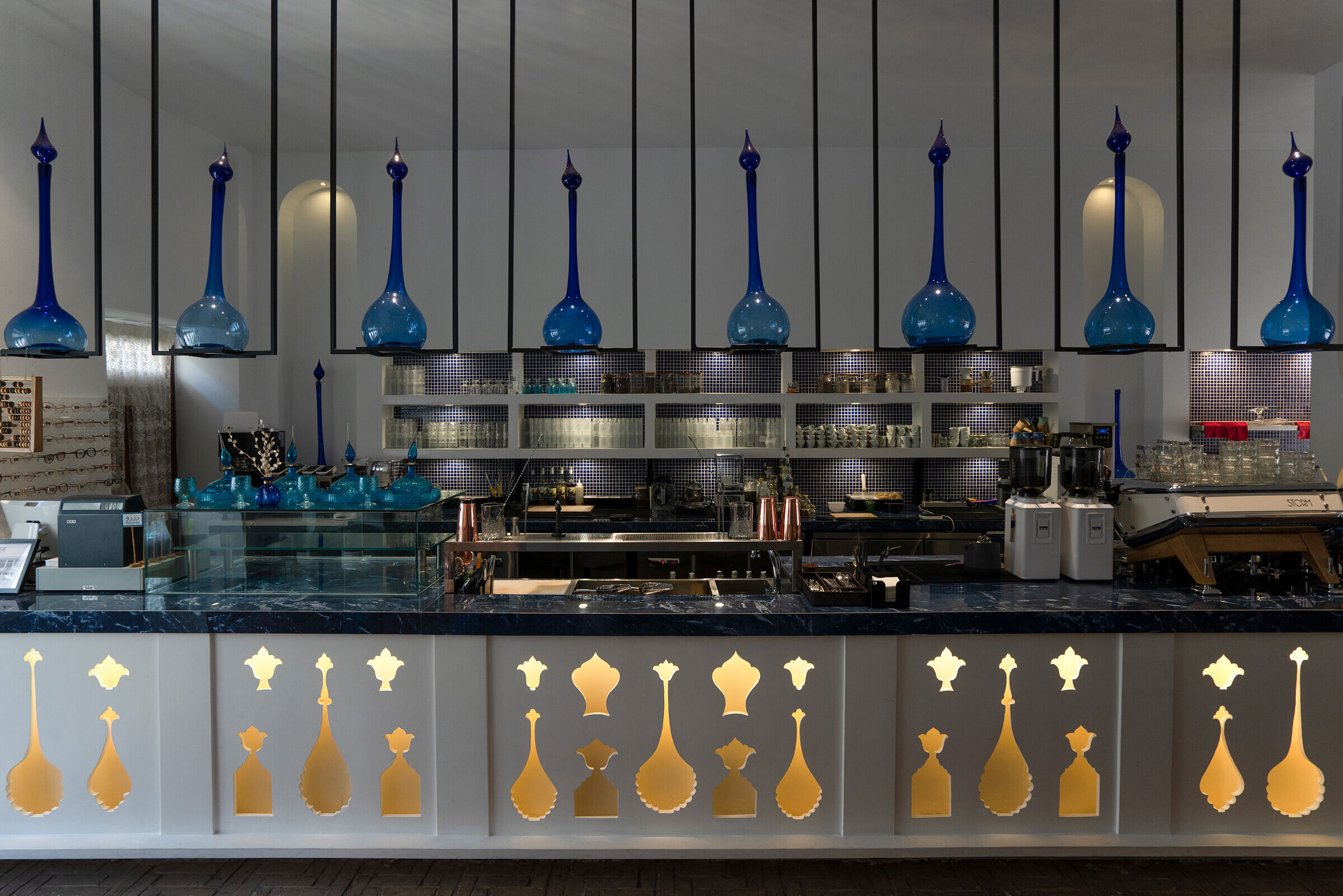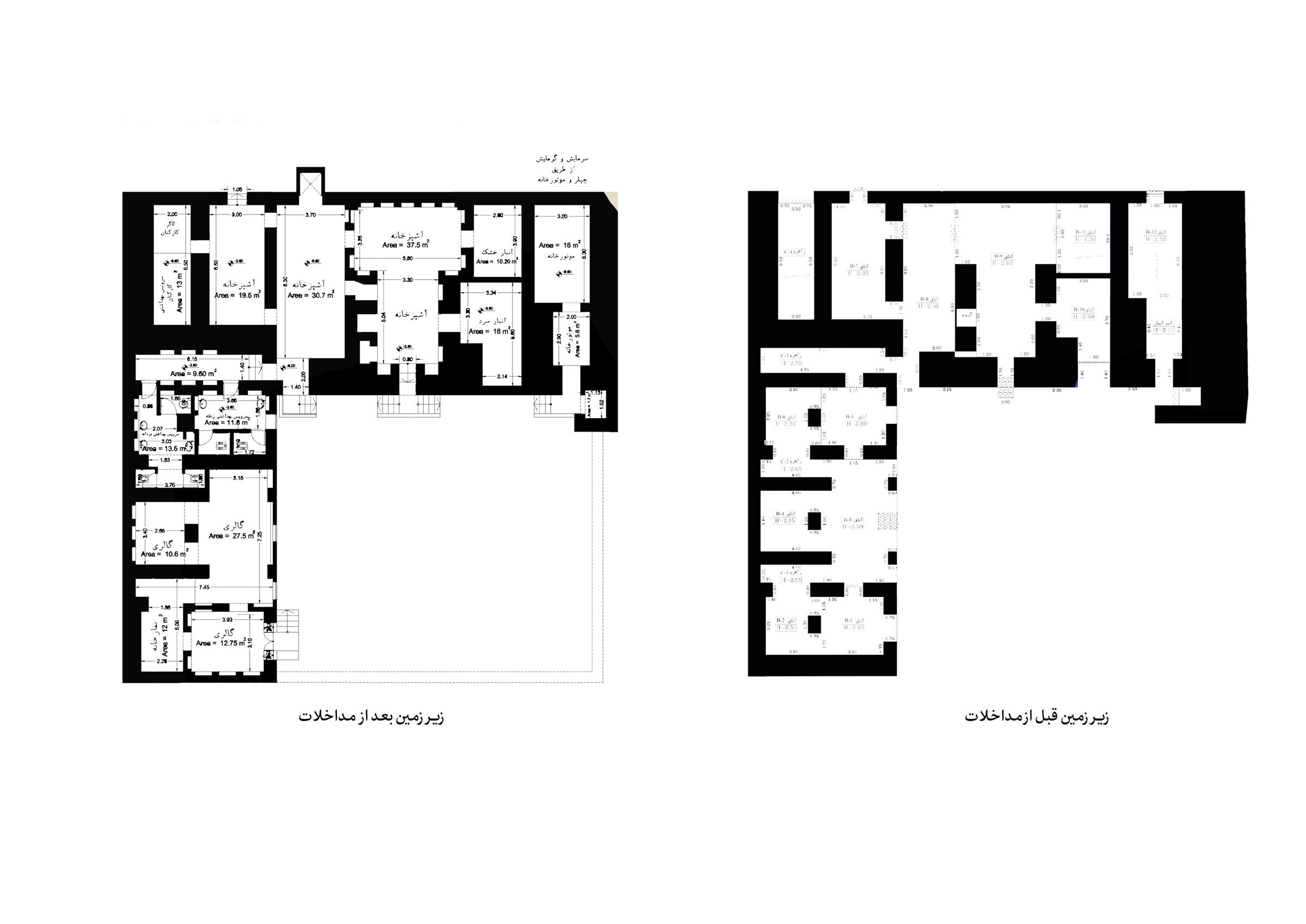A nearly old and semi-abandoned house, which appears to belong to the Pahlavi era, is purchased by an investor due to its features such as being a villa, having large open and covered spaces, and its prime location. The plan is to renovate it and convert it into a café and restaurant. However, during the initial examination of the building's documents, the design team discovers that the structure dates back to the late Qajar period, with its original essence buried under layers of later modifications.


Consequently, a decision is made to remove these later layers, which had concealed much of the building's details and decorations, to restore the valuable original architecture that had been hidden for about 40 to 50 years. After removing these additions and secondary finishes, the building’s core structure is revealed, allowing the restoration and renovation scenario to be based on its original condition.



One of the strategies involves completing some of the valuable parts that only had remnants left, including the building's vestibule. Additionally, some other parts that had been destroyed would either be preserved in their current state as symbolic representations or repurposed in line with the new usage.


Condition of the Building Before Renovation: An old and semi-abandoned house, initially thought to be from the Pahlavi era, exhibited signs of heterogeneous changes over several phases. Upon further investigation of the building's documents and structure, it was revealed that the house actually dates back to the late Qajar period. For unknown reasons, a decision had been made to make fundamental changes to the building's appearance, both inside and outside, resulting in large portions of the structure being buried under a layer of gypsum plaster for 40 to 50 years.







































